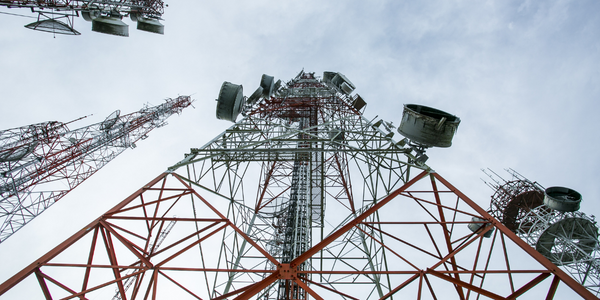Technology Category
- Analytics & Modeling - Computer Vision Software
- Robots - Wheeled Robots
Applicable Industries
- Healthcare & Hospitals
- Telecommunications
Applicable Functions
- Product Research & Development
Use Cases
- Building Automation & Control
- Time Sensitive Networking
Services
- System Integration
About The Customer
Healthline is the world's largest provider of health information, covering all aspects of physical and mental health. The company offers a range of resources, including articles, tools, newsletters, apps, podcasts, and communities, to support people on their health journeys. Healthline's approach is characterized by empathy, a 'whole person' perspective, medical accuracy, meaningful community engagement, and the provision of content that consumers need. The company's content development process is underpinned by medical integrity, relatability, and trust. Healthline's main competitor in this space is WebMD. In 2019, Healthline claimed the top spot in the online health information category, attracting 81 million unique visitors in June of that year.
The Challenge
Healthline, the world's largest health information provider, faced a significant challenge in creating an online social community experience for users of its Healthline Together Apps. These apps were designed to address chronic health issues and reduce the social isolation often experienced by those living with such conditions. The company aimed to create a user-friendly, engaging, and familiar platform where users could discuss their conditions and receive relevant content. However, they needed to ensure that the technology was easy to navigate, allowing users to focus on their conversations rather than struggling with the platform. The apps also needed to be competitive with other leading social networks in terms of design and functionality. Healthline considered building an in-house solution but realized that this would require significant resources and potentially detract from their core competencies.
The Solution
Healthline partnered with Stream to develop the activity feed for their apps. Stream's technology allowed for the creation of a personalized feed for each user, based on data collected through user interactions such as clicks, likes, and follows. This personalization was crucial given the unique nature of each user's condition and stage of illness. Stream also helped Healthline optimize the experience for new users, using algorithms to match them with existing members based on medical history, lifestyle activities, medication information, and nutrition plans. This approach resulted in increased user retention. Stream's resources also allowed Healthline to expand the apps to the web, increasing their exposure and potential user base. The integration process with Stream was described as 'pleasant' and 'easier than expected', with a shared Slack channel facilitating communication between the two teams.
Operational Impact
Quantitative Benefit

Case Study missing?
Start adding your own!
Register with your work email and create a new case study profile for your business.
Related Case Studies.

Case Study
Hospital Inventory Management
The hospital supply chain team is responsible for ensuring that the right medical supplies are readily available to clinicians when and where needed, and to do so in the most efficient manner possible. However, many of the systems and processes in use at the cancer center for supply chain management were not best suited to support these goals. Barcoding technology, a commonly used method for inventory management of medical supplies, is labor intensive, time consuming, does not provide real-time visibility into inventory levels and can be prone to error. Consequently, the lack of accurate and real-time visibility into inventory levels across multiple supply rooms in multiple hospital facilities creates additional inefficiency in the system causing over-ordering, hoarding, and wasted supplies. Other sources of waste and cost were also identified as candidates for improvement. Existing systems and processes did not provide adequate security for high-cost inventory within the hospital, which was another driver of cost. A lack of visibility into expiration dates for supplies resulted in supplies being wasted due to past expiry dates. Storage of supplies was also a key consideration given the location of the cancer center’s facilities in a dense urban setting, where space is always at a premium. In order to address the challenges outlined above, the hospital sought a solution that would provide real-time inventory information with high levels of accuracy, reduce the level of manual effort required and enable data driven decision making to ensure that the right supplies were readily available to clinicians in the right location at the right time.

Case Study
Gas Pipeline Monitoring System for Hospitals
This system integrator focuses on providing centralized gas pipeline monitoring systems for hospitals. The service they provide makes it possible for hospitals to reduce both maintenance and labor costs. Since hospitals may not have an existing network suitable for this type of system, GPRS communication provides an easy and ready-to-use solution for remote, distributed monitoring systems System Requirements - GPRS communication - Seamless connection with SCADA software - Simple, front-end control capability - Expandable I/O channels - Combine AI, DI, and DO channels

Case Study
Driving Digital Transformations for Vitro Diagnostic Medical Devices
Diagnostic devices play a vital role in helping to improve healthcare delivery. In fact, an estimated 60 percent of the world’s medical decisions are made with support from in vitrodiagnostics (IVD) solutions, such as those provided by Roche Diagnostics, an industry leader. As the demand for medical diagnostic services grows rapidly in hospitals and clinics across China, so does the market for IVD solutions. In addition, the typically high cost of these diagnostic devices means that comprehensive post-sales services are needed. Wanteed to improve three portions of thr IVD:1. Remotely monitor and manage IVD devices as fixed assets.2. Optimizing device availability with predictive maintenance.3. Recommending the best IVD solution for a customer’s needs.

Case Study
HaemoCloud Global Blood Management System
1) Deliver a connected digital product system to protect and increase the differentiated value of Haemonetics blood and plasma solutions. 2) Improve patient outcomes by increasing the efficiency of blood supply flows. 3) Navigate and satisfy a complex web of global regulatory compliance requirements. 4) Reduce costly and labor-intensive maintenance procedures.









